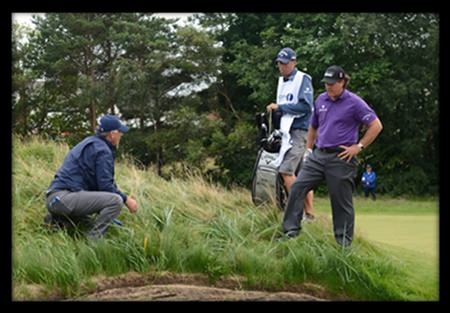When watching the pros strut their stuff on golf’s made-for-TV worldwide stage, I used to wonder why they appeared to have as much understanding of the Rules of Golf as a newbie. How many times, for instance, do we see a pro ask for a ruling from an official that involves the most fundamental of situations? “Surely,” one asks the TV set, “he knows the answer to that?”
The odds are the pro does indeed know the answer, but seeks a level of assurance that removes all doubt. Take the majors, where there is usually a rules official inside the ropes accompanying each playing group, it becomes easy for a player simply to seek a ruling over any possible problem. He would be silly not to for the very reason that once he acts in accordance with an official’s ruling, that player cannot be penalised – even if the ruling is later proved incorrect.
One downside to this – if it can be so described – is that over time pros become far less knowledgeable on the Rules, which leads to the situation referred to above; seeking clarification on the most basic of rulings. The other downside is that it slows the pace of play.
The R&A’s website publishes a Rules Report after each Open Championship which tells an interesting story. At this year’s championship at Muirfield there were 234 rulings, compared to the 339 the year prior at Lytham, where the unusually high water-table saw excessive casual water.
 Leftie in a spot of bother.
Leftie in a spot of bother.
The report states the majority of Muirfield’s rulings were simple affairs such as unplayable ball (18 rulings), identifying ball (17), interference from movable obstructions like cables (20) and relief from immovable obstructions such as sprinkler heads (29). So much for the straightforward events, but the following incidences were anything but:
Rub of the Green: Thomas Bjorn, in playing his second from the rough on his opening hole, hit his ball into a TV camera, breaking its screen. TV cameras are an outside agency so when a player’s ball in motion is deflected or stopped, it is deemed rub of the green; no penalty, play it as it lies. Bjorn, I’m sure, would have preferred the option of replaying the shot, without penalty, as he went on to double-bogey thanks to the terrible lie.
During the same round, Luke Donald’s third shot at the par-five 9th was so badly pulled that it hit the top of a boundary wall before hitting the hospitality complex beyond the boundary and ricocheting back into bounds, all the way to the front of the green. He took advantage of this rub of the green by getting up and down for par.
Slow Play: The Rules of Golf allow for local committees to establish their own policy regarding pace of play (Rule 6-7). The policy adopted at all R&A Championships sees each hole given a time limit. If a group falls behind the accumulated time and more than their initial starting gap behind the group in front, they are considered out of position and put on the clock. When this occurs the first player to play a tee-shot, approach shot or putt, has 50 seconds to play, whilst the other players in the group have 40 seconds. They are taken off the clock when they are either back in position with the group in front, or back on their time schedule. These rules are an integral part of any R&A Tournament, including The Open.
During the third round, Hideki Matsuyama’s group was put on the clock on the 15th as they were 15 minutes over their scheduled time and five minutes out of position on the group ahead. Matsuyama’s first bad time was recorded on his first putt at one minute 12 seconds. He was advised of this bad time and told a repeat would be penalised.
His second bad time came with his second shot on the 17th. As his tee shot had gone into the crowd, he was given additional time to deal with the spectators and to go forward to assess his shot. The timing therefore only started when he returned to his ball. He then took a further two minutes 12 seconds to play the shot. The five he scored thus became six.
Ball Interfering with Play: I recall watching TV coverage of the second round, showing Graeme McDowell re-marking his ball on the 4th green as it was interfering with Tiger Wood’s line of putt. After Tiger had played, Gmac replaced his ball and putted out – from the same spot! On reading the R&A report I now realise Gmac had previously marked his ball away from the original spot. What I witnessed was Gmac marking his ball for a second time, and thus returning it to its original spot. I wonder how many phone-ins the tournament organisers received.
Next week: Rulings Part Two.
Golfnutter



